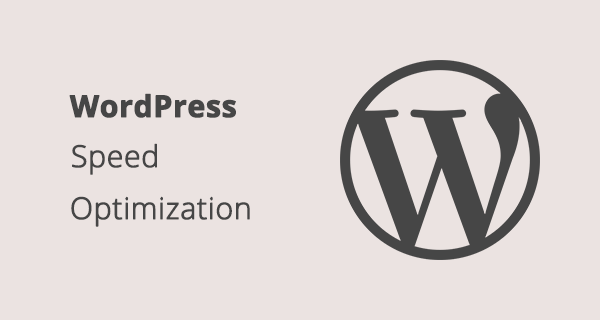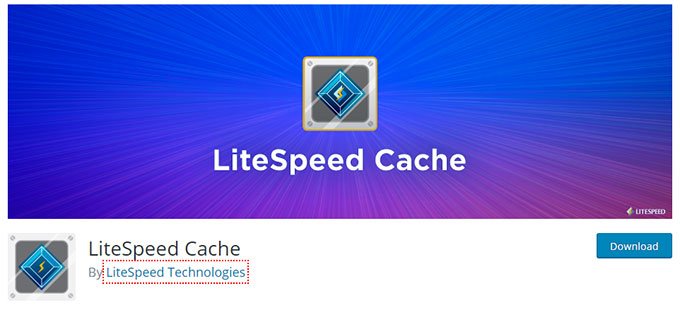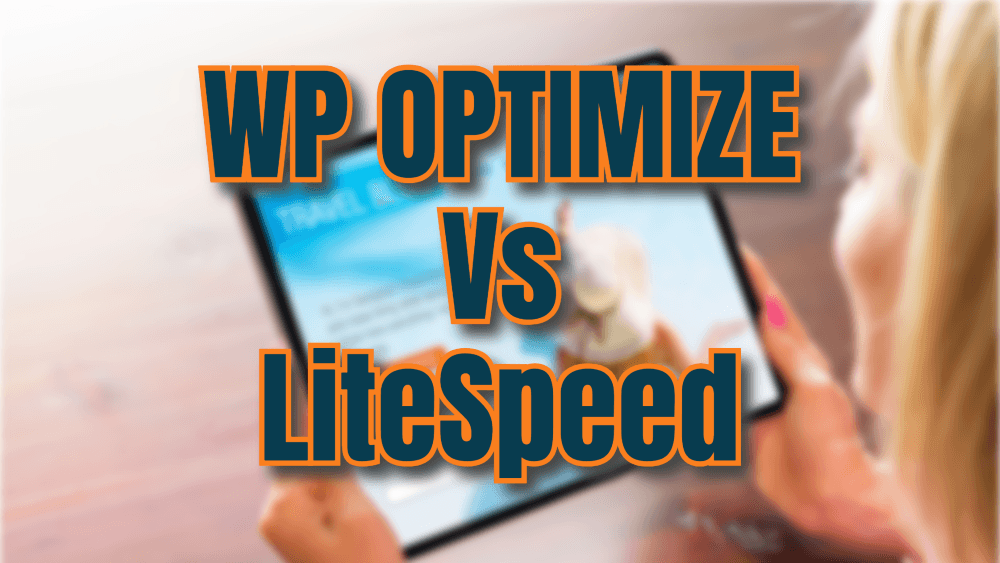Last Updated on by Azib Yaqoob
When it comes to WordPress optimization, WP-Optimize and LiteSpeed Cache are two popular plugins used to improve site performance and manage resources. Each offers unique features and optimizations, so choosing between them can feel daunting, especially as both have garnered significant popularity among WordPress site owners and developers alike.
In this comprehensive article, we’ll dive deep into a comparison of WP-Optimize and LiteSpeed Cache. We’ll examine their features, performance impacts, ease of use, compatibility, and pricing to help you decide which is the best choice for your site’s specific needs.
Table of Contents
1. Introduction to WordPress Optimization

In the competitive landscape of digital content, website speed and performance optimization are essential for a successful WordPress site. A fast, well-optimized site can improve user experience, SEO ranking, and conversion rates. Without proper optimization, slow page load times can lead to high bounce rates and reduced search engine rankings.
Both WP-Optimize and LiteSpeed Cache have been designed to address common performance issues on WordPress sites. They help reduce server load, optimize databases, compress images, and implement caching, which together lead to better load times and enhanced performance.
2. Overview of WP-Optimize

WP-Optimize is a well-established WordPress plugin focusing primarily on database optimization, image compression, and page caching. Known for its user-friendly interface, WP-Optimize enables site owners to clean up unnecessary data and compress images efficiently.
Key Features of WP-Optimize
- Database Optimization: Cleans up post revisions, spam comments, trash, and other unnecessary data to improve database efficiency.
- Image Compression: Reduces the file size of images without losing quality.
- Page Caching: Stores a static version of pages to reduce server load and improve load times.
- Minification and Compression: Allows HTML, CSS, and JavaScript minification to reduce file sizes.
- Lazy Loading: Improves load times by loading images only when they appear on the screen.
Pros and Cons of WP-Optimize
| Pros | Cons |
|---|---|
| Simple, user-friendly interface | Limited caching options |
| Great for database optimization | Fewer advanced features compared to LiteSpeed Cache |
| Effective image compression | Lacks CDN integration |
| Works with most hosting environments | Free version lacks some features |
WP-Optimize is known for its ease of use and a well-rounded feature set that doesn’t overwhelm the user. Its primary focus is on database and image optimization, making it an ideal choice for users who need straightforward performance improvements.
3. Overview of LiteSpeed Cache

LiteSpeed Cache is a more advanced, comprehensive caching and optimization plugin. Originally designed to work with LiteSpeed Web Server (although compatible with Apache and Nginx), LiteSpeed Cache offers a range of powerful features, including full-page caching, browser caching, and database optimization.
You may also find this comparison helpful, We have compared LiteSpeed cache with Nitropack.
Key Features of LiteSpeed Cache
- Full-Page Caching: Provides server-level caching for fast page loads.
- Edge-Side Includes (ESI): Allows for caching specific parts of a page for a more dynamic experience.
- Image Optimization: Includes image compression and WebP support.
- Database Optimization: Removes unnecessary data from the database to improve efficiency.
- CSS/JavaScript Minification and Combination: Reduces file sizes by minifying and combining CSS and JavaScript files.
- CDN Support: Integrates with LiteSpeed’s QUIC.cloud CDN for global content delivery.
- Advanced Caching: Provides caching for WordPress multisite, WooCommerce, and other complex setups.
Pros and Cons of LiteSpeed Cache
| Pros | Cons |
|---|---|
| Extremely powerful caching capabilities | Best optimized for LiteSpeed Web Server |
| Supports advanced caching for dynamic content | Interface may be complex for beginners |
| Integrated CDN options | LiteSpeed Web Server license required for some features |
| Includes ESI for flexible caching | Some features may not work on all servers |
LiteSpeed Cache is ideal for users seeking high-performance caching with advanced features. While it works best with LiteSpeed Web Server, it also functions on Apache and Nginx servers, though some features may be limited. If you’re planning to try other caching plugins, we have written a review of: NitroPack vs. WP Rocket: Which is Faster?
4. WP-Optimize vs LiteSpeed Cache: Feature Comparison
| Feature | WP-Optimize | LiteSpeed Cache |
|---|---|---|
| Database Optimization | Yes | Yes |
| Page Caching | Basic | Advanced (with ESI and more) |
| Image Optimization | Yes | Yes (WebP support) |
| Minification | Yes | Yes |
| Lazy Loading | Yes | Yes |
| CDN Support | No | Yes (QUIC.cloud) |
| Multisite Support | Limited | Yes |
| WooCommerce Optimization | Limited | Yes |
LiteSpeed Cache offers a more comprehensive range of features than WP-Optimize, particularly for caching and CDN support. However, WP-Optimize provides enough essential features for general optimization needs.
5. Performance Testing: WP-Optimize vs LiteSpeed Cache
To evaluate the effectiveness of WP-Optimize and LiteSpeed Cache, several performance metrics are generally considered, such as page load time, server response time, and overall reduction in page size. Here’s a general outline of how both plugins perform in these areas:
- WP-Optimize: Offers consistent speed improvements by reducing database clutter, compressing images, and enabling page caching. On average, WP-Optimize can reduce load times significantly for sites with heavy databases.
- LiteSpeed Cache: When used on a LiteSpeed server, this plugin can dramatically improve performance, offering near-instant load times thanks to server-level caching. With QUIC.cloud integration, LiteSpeed Cache can reduce load times by a significant margin, even for global traffic.
In general, LiteSpeed Cache outperforms WP-Optimize on LiteSpeed servers due to its robust caching capabilities and CDN integration. However, WP-Optimize holds its own for non-LiteSpeed server setups, especially on smaller, less complex sites.
6. Ease of Use
- WP-Optimize: Known for a clean, straightforward interface, WP-Optimize is user-friendly and requires minimal configuration. It’s ideal for beginners or those who prefer a simpler setup process.
- LiteSpeed Cache: Has a more complex interface that may overwhelm beginners but offers in-depth control for advanced users. LiteSpeed Cache’s setup can take more time, especially if configuring QUIC.cloud or advanced caching.
Winner: For simplicity, WP-Optimize is preferable, while LiteSpeed Cache is better for those who are comfortable with a more involved setup.
7. Compatibility with Hosting and Themes
- WP-Optimize: Works with most shared hosting environments and is generally compatible with various themes and plugins, making it a more versatile choice in terms of compatibility.
- LiteSpeed Cache: Works best on LiteSpeed Web Server but is also compatible with Apache and Nginx. Some features, however, are only available on LiteSpeed Web Server, so those on other servers may not be able to use the plugin to its full potential.
For sites on LiteSpeed hosting, LiteSpeed Cache is a clear winner, while WP-Optimize is more flexible across different server environments.
Please also read: WP Super Cache vs. Fastest Cache: Which is Better?
8. Pricing
Both plugins offer free versions with optional premium plans:
- WP-Optimize: Has a free version with most essential features and a premium version starting at $39/year, which includes more advanced database cleaning and image optimization.
- LiteSpeed Cache: The plugin itself is free, but certain features require a LiteSpeed Web Server license or paid QUIC.cloud services for CDN.
Winner: WP-Optimize offers affordable pricing and a wider range of functionality in its free version for general users. LiteSpeed Cache is a better investment for those already using LiteSpeed Web Server, as many of its powerful features are free for LiteSpeed users.
9. Which Should You Choose?
Choose WP-Optimize if:
- You are on shared hosting or a non-LiteSpeed server.
- You prefer a simple, easy-to-configure plugin focused on database and image optimization.
- Your website needs basic optimization without extensive caching or CDN support.
Choose LiteSpeed Cache if:
- Your site is hosted on a LiteSpeed Web Server, allowing access to its full caching capabilities.
- You have a larger or more complex site with high traffic.
- You want comprehensive caching, CDN integration, and image optimization, especially if you’re comfortable with a more technical setup.
10. Conclusion
Both WP-Optimize and LiteSpeed Cache are powerful tools for WordPress optimization, each with unique strengths. WP-Optimize is an excellent choice for simple, easy-to-use performance improvements and works well on any hosting environment. LiteSpeed Cache, however, offers advanced caching and is best for high-performance sites hosted on LiteSpeed Web Servers.
Ultimately, the choice between WP-Optimize and LiteSpeed Cache depends on your server environment, optimization needs, and technical comfort level. For most general users, WP-Optimize provides a solid foundation for WordPress optimization. For those on LiteSpeed Web Server, LiteSpeed Cache is likely the best option to maximize performance.
Also, you may find this article helpful: How to Serve Cache for Logged-In Users in WordPress?

